It’s here. We think. We hope. We’re 99.99 percent sure: the Olympic Games are officially happening. A race that began on September 30, in Qinzhou, China, and has weathered a pandemic and almost a full year off competition, alas has the finish line in sight.
Olympic Games Tokyo 2020 - Beach Volleyball
Men's Beach Volleyball Olympic tournament: Breaking down all six pools
The Olympic beach volleyball field is set! Now for a breakdown of all 24 teams in six different pools
Published 11:51, 14 Jul 2021
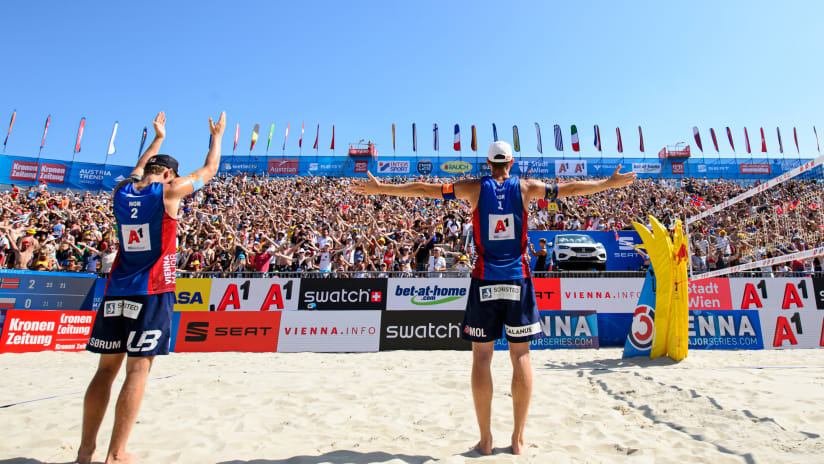
The Tokyo Olympics are just days away.
With the final Olympic qualifying event finishing in Ostrava, Czech Republic, succeeded by a quintet of Continental Cups, the 24 teams per gender were set. The only matter left was a drawing of the lots. On Monday, July 5, those lots were drawn, six pools divvied out, field finalized.
After 33 months, the most popular sport in the Summer Olympics was finally ready.
Now, for a breakdown of each pool.
Pool A: The mixed bag
Anders Mol, Christian Sorum (Norway); Konstantin Semenov, Ilya Leshukov (ROC); Pablo Herrera, Adrian Gavira (Spain), Chris McHugh, Damien Schumann (Australia).
Pool A, which we’ve dubbed ‘The Mixed Bag’ is an intriguing one, a blend of rookies and savvy veterans. This pool features the unquestioned No. 1 team in the world, and one of the most dominant teams in history in Norway’s Anders Mol and Christian Sorum. The point lead they established – not to mention the prize money won – with back-to-back-to-back wins in Gstaad, Vienna, and Hamburg in 2018 was flat out silly. They haven’t relinquished their hold atop the rankings – or popularity – ever since. And yet, it must be pointed out that Mol and Sorum, who are just 24 and 25 years old, respectively, are Olympic rookies. While you can safely assume they’ll continue to be their typical, excellent selves, exactly how they’ll perform on the game’s biggest stage is never a guarantee.
Similarly, Australians Damien Schumann and Chris McHugh are making their Olympic debuts, having earned their first Olympic berth by winning the Asia Continental Cup. They’re not all rookies in this pool, however. Remember: It’s a mixed bag.
Konstantin Semenov is making his third Olympic appearance, which should balance out the fact that it is 25-year-old Ilya Leshukov’s first. No balancing is needed for Spain’s Adrian Gavira and Pablo Herrera. They enter as the single most experienced Olympic team in the entire field, with a now-eight combined Olympic appearances between them – Herrera won a silver in 2004 and has qualified in every Olympics since; Gavira has competed in the Games since 2012.
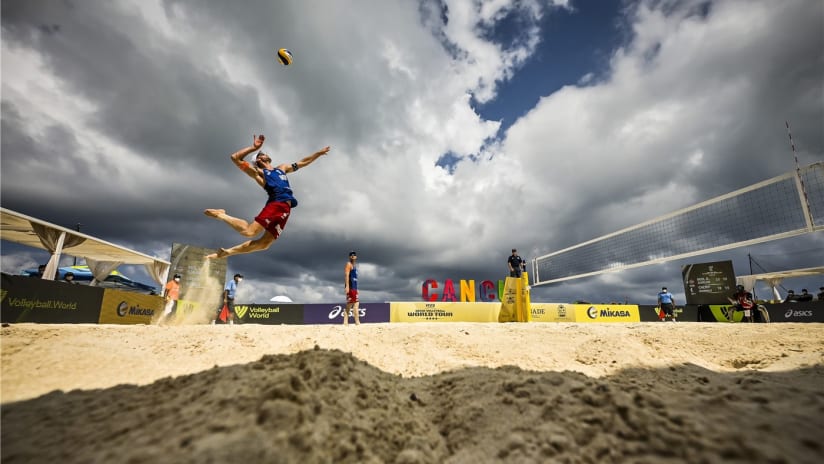
Anders Mol (NOR)
Pool B: Anybody’s Pool
Viacheslav Krasilnikov, Oleg Stoyanovskiy (ROC); Ondrej Perusic, David Schweiner (Czech Republic); Martins Plavins, Edgars Tocs (Latvia); Jose Rubio, Josue Gaxiola (Mexico).
A year ago, this would not be anybody’s pool. This would be the world champions' pool and theirs only. A year ago, the only team in the world who could go toe-for-toe with the Norwegians was Viacheslav Krasilnikov and Oleg Stoyanovskiy. And, to be sure, it was none other than Krasilnikov and Stoyanovskiy who swept the 2019 World Championships and World Tour Finals. They may not have won at the torrid rate of the Norwegians, but they won the biggest events on the schedule. An Olympic final between Norway and the world champions seemed inevitable.
And then came COVID. A year off. And then came an entirely different beach volleyball landscape in 2021.
This season has been an odd one for the world champions – and a promising one for both the Czech Republic’s Ondrej Perusic and David Schweiner, and Mexico’s Jose Rubio and Josue Gaxiola. The Czechs began the year with a win in Doha, bronze in the opening event of the Cancun Bubble, and a silver at their home event in Ostrava. They will not enter as gold medal favorites, but if there’s a team who could architect an upset of the highest order, it is none other than Perusic and Schweiner.
Unless, of course, it would be Mexico’s Jose Rubio and Josue Gaxiola, a pair of youngsters who have dethroned veterans Lombardo Ontiveros and Juan Virgen atop the Mexican beach volleyball hierarchy. It was Rubio and Gaxiola who assured Mexico an Olympic berth, putting on an extraordinary performance in the NORCECA Continental Cup. In their small sampling of FIVB experience, they’ve proven they can compete at the highest level, taking a silver in the 2020 Doha four-star while logging wins over Krasilnikov and Stoyanovskiy, Mirco Gerson and Adrian Heidrich, Tri Bourne and Trevor Crabb, and Evandro and Bruno.
Like the Czechs, they might not be medal favorites, but an upset or three could certainly be in the cards for them.
Perhaps the biggest enigma of this Olympic field is the one rounding out Pool B: Latvia’s Martins Plavins and Edgars Tocs. Similar to Chile’s Marco and Esteban Grimalt -- we'll touch upon them later -- they began this Olympic qualifying period hot, with 11 top-10 finishes in 2019, including a bronze at the Espinho four-star. They concluded that searing run with a victory at the Olympic Qualifying Tournament, guaranteeing a berth at the 2021 Olympic Games.
And then, with the Olympic bid in the bag, Plavins and Tocs have all but disappeared from medal contention. In four tournaments in 2021, they have won just two total matches, finishing 25th, 17th, 25th, and 17th again, the worst stretch of their partnership. They’re capable of far more, of course, which makes them a dangerous team, one who could figure things out at exactly the right time.
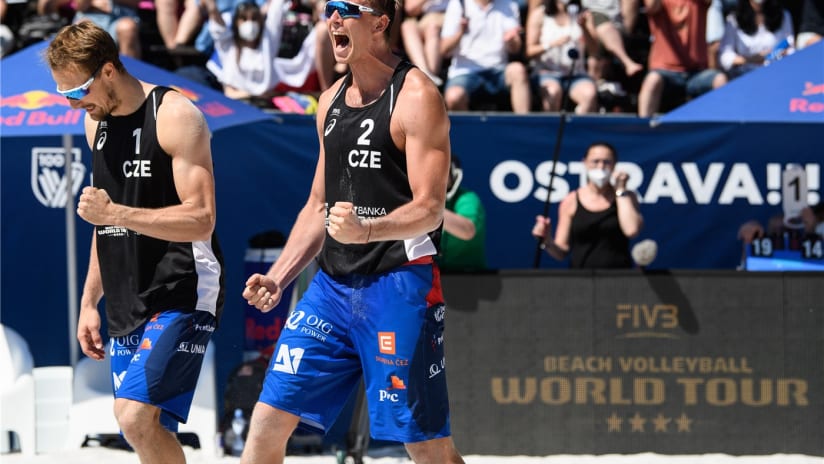
Ondrej Perusic and David Schweiner (CZE)
Pool C: The Pool of Death
Pool C – Cherif Samba, Ahmed Tijan (Qatar); Jake Gibb, Taylor Crabb (USA); Adrian Carambula, Enrico Rossi (Italy); Adrian Heidrich, Mirco Gerson (Switzerland).
This is it. The one pool where every match is absolute appointment viewing. Where anybody can beat anybody on any given night. While no, there may not be a hotter team in the world than Qatar’s Cherif Samba and Ahmed Tijan, there is also no team more maddening to play against than Italy’s Adrian Carambula and Enrico Rossi. While American blocker Jake Gibb, competing in his fourth Olympic Games, is one of the steadiest presence’s in the world, you never know when Swiss blocker Adrian Heidrich is going to have one of those nights when he blocks eight balls in a match. While siding out might be a strong suit of Qatar, there is no easy point against American defender Taylor Crabb. While the ball control of Carambula and Rossi borderlines on pure wizardy, Swiss defender Mirco Gerson’s serve is one of the most formidable in the world.
Beyond the sheer depth of talent in this pool, what’s especially fun is the varying styles of play. Any pool that Rossi and Carambula are in automatically becomes one of the most unique. But few, if any, teams can play at the height and explosiveness of Qatar, just as few can play with the devastating efficiency of a Gibb, or the ‘How did he just do that?’ defensive magic tricks of Crabb.
There are no easy games in any pool, but in Pool C, the pool of death, this is especially true.

Taylor Crabb (USA)
Pool D: Block Party
Pool D – Alison Cerutti, Alvaro Filho (Brazil); Alex Brouwer, Robert Meeuwsen (Netherlands); Nick Lucena, Phil Dalhausser (USA); Julian Azaad, Nico Capogrosso (Argentina)
Before we get too far, let’s be clear: Every pool in the Olympic Games has phenomenal blockers. Unbelievable blockers. Pool A, for instance, has Anders Mol, who if he sustains his current pace may go down as the best blocker to ever play this game. It also has Konstantin Semenov, who, well, is 2.10 meters tall. He gets blocks.
But no pool has both the depth and resume at the net as Pool D. Brazil’s Alison Cerutti is one of the most decorated blockers in beach history. He won an Olympic silver in 2012 and a gold at home in Rio in 2016. He's won World Championships. He's won everything there is to win in this sport. Athletes are often judged on how they do on the game’s biggest staged: Quarterbacks are ranked by Super Bowl wins, football players are measured by World Cup performances, baseball by World Series success. Beach volleyball players are measured by Olympics and Majors. Alison has won the big ones.
As has American legend Phil Dalhausser.
Making his fourth Olympic appearance, Dalhausser won gold in 2008, and will go down as the best blocker in U.S. history, rivaled only by Randy Stoklos, who played in a different era with different rules where comparisons are mostly erroneous. Dutch blocker Robert Meeuwsen, too, has enjoyed supreme success, winning a World Championship in 2013, following it up with a bronze medal in the 2016 Olympics.
While Argentina’s Nico Capogrosso does not have the accolades of his Pool D counterparts, he is, make no doubt, a presence at the net. In the 2021 season thus far, the Argentinian is siding out at a patently absurd 71 percent and averages one block per set. The one block per set isn’t exceptionally high, but players tend to avoid him, funneling instead to his defender, Julian Azaad, who is picking up nearly four digs per set.
At the end of the day, the winner of this pool will more than likely come down to whichever blocker puts on the most dominant performance.
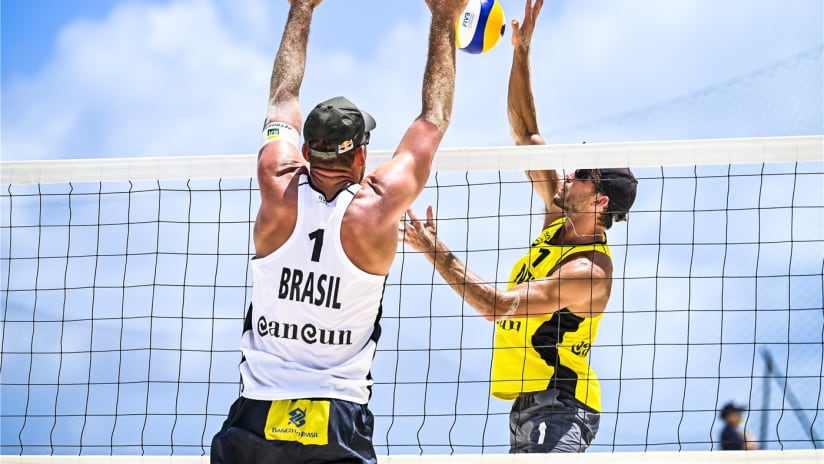
Alison Cerutti (BRA), Sam O'Dea (NZL)
Pool E: The Mercurial Pool
Pool E – Grzegorz Fijalek, Michal Bryl (Poland); Evandro Goncalves, Bruno Schmidt (Brazil); Marco Grimalt, Esteban Grimalt (Chile); Mohamed Abicha, Zouheir Elgraoui (Morocco).
On any given day, top three teams of this pool could be the absolute best team on the planet. Any, on any given day, the top three teams of this pool could just sort of…disappear. It’s weird. When you watch Brazilians Evandro Goncalves and Bruno Schmidt on a good day, it’s honestly a wonder how they ever lose. Bruno wasn’t named the FIVB Best Defensive Players four consecutive years on accident. He didn’t win a gold medal in 2016 on accident, just as Evandro has not been voted the FIVB’s Best Server five – count ‘em, five – straight years for no good reason. On a good day, there is no team who is more difficult to score on.
A similar sentiment could be felt for Poland’s Grzegorz Fijalek and Michal Bryl. Fijalek is a consummate veteran, a 20-time FIVB medalist who is competing in his third Olympics. Bryl is one of the most promising young blockers in the world, a 26-year-old who is rarely, if ever, allowed to touch the ball. Offensively, they’re crafty; defensively, they’re maddening. On good days, they’re medal contenders. On not so good days, like all three events in the Cancun Bubble, where they lost in the qualifier, took 17th, and a 25th, it’s a wonder how they can resume the 2019 form that played such a critical role in attaining the 5 seed for this Olympics.
As for the Grimalts, Marco and Esteban of Chile, they’ve been ice cold of late. In seven tournaments in 2021, they’ve played 16 matches and won only four. They’ve lost 25 of 36 sets and have been outscored 695-632. It is a sharp contrast from the team who began this Olympic qualification process with back to back wins in Sydney and Doha and followed it up with five top-10s to finish the season.
But still, the fact that they’ve done it means excellence is somewhere in there, and Tokyo could be the time it surfaces once more.
As for Morocco’s Mohamed Abicha and Zouheir Elgraoui, they will enter as the team with the least amount of information. They’ve played four FIVB events together, and they’ve been marginally competitive in all of them, taking a fourth at their home event in Agadir in 2017. However, perhaps all you really need to know is that everyone looks up to Abicha in his country, a 41-year-old veteran who is one of the only true beach players in the country – everyone else splits time playing indoors.
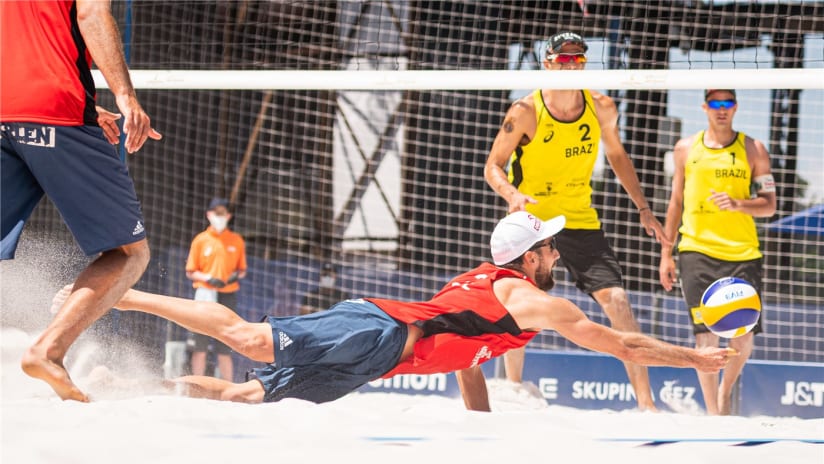
Grzegorz Fijalek (POL)
Pool F: The 2018-2019 All-Stars
Pool F – Yusuke “Gottsu” Ishijima, Katsuhiro Shiratori (Japan); Julius Thole, Clemens Wickler (Germany); Paolo Nicolai, Daniele Lupo (Italy); Piotr Kantor, Bartosz Losiak (Poland).
Had this pool been released in 2018 or 2019, it would have been in contention as the Pool of Death, even with a relatively weaker Japanese team rounding it off. Germany’s Julius Thole and Clemens Wickler even played Poland’s Bartosz Losiak and Piotr Kantor for the bronze medal at the 2018 World Tour Finals, while Italy’s Daniele Lupo and Paolo Nicolai took fifth. But alas, this is not 2018, and many things have changed, most notably in the injuries column.
Thole and Wickler remained healthy in 2019, and it showed to the tune of four medals, including a pair of silvers at World Championships and World Tour Finals. But 2021 has not been kind to the Germans, as Wickler pulled out of Cancun and Thole was forced to crutches in Sochi.
Poland, too, has been bit by the injury bug, mainly Kantor, who was named the 2016 Most Improved Player. After a 2018 season in which he and Losiak won five medals, Poland went two years without one, finally ending the medal drought with a gold medal in Sochi in May. They looked strong, healthy, fit for a medal in Tokyo, though Kantor was notably hobbled in Gstaad last week. They still finished fifth, an admirable result, but Kantor didn't look quite as spry as he did in Sochi or Ostrava in the weeks prior.
Nicolai and Lupo have suffered no such injuries – not publicly, anyway – but their finishes have been up-and-down, and it has now been half a decade since they’ve won a gold medal on the World Tour. But we know they’re capable of doing so, having won a silver in the 2016 Olympics, giving eventual gold medalists Alison and Bruno everything they could handle in the final.
Now, were Yusuke “Gottsu” Ishijima and Katsuhiro Shiratori at the top of the FIVB rankings in 2018? No. They weren’t even playing together yet. But what a fun story the home team is. The 2021 Olympics marks Shiratori’s third and, most likely, final Olympic Games. He might be the most decorated male player in Japanese beach volleyball history. He’s a living legend. And he’s going out in the biggest event in the sport, on his home turf.
There might not be any fans allowed in Tokyo anymore, but if you’re watching at home, this 44-year-old deserves a standing ovation.
As for the Grimalts, Marco and Esteban of Chile, they’ve been ice cold of late. In seven tournaments in 2021, they’ve played 16 matches and won only four. They’ve lost 25 of 36 sets and have been outscored 695-632. It is a sharp contrast from the team who began this Olympic qualification process with back to back wins in Sydney and Doha and followed it up with five top-10s to finish the season.







